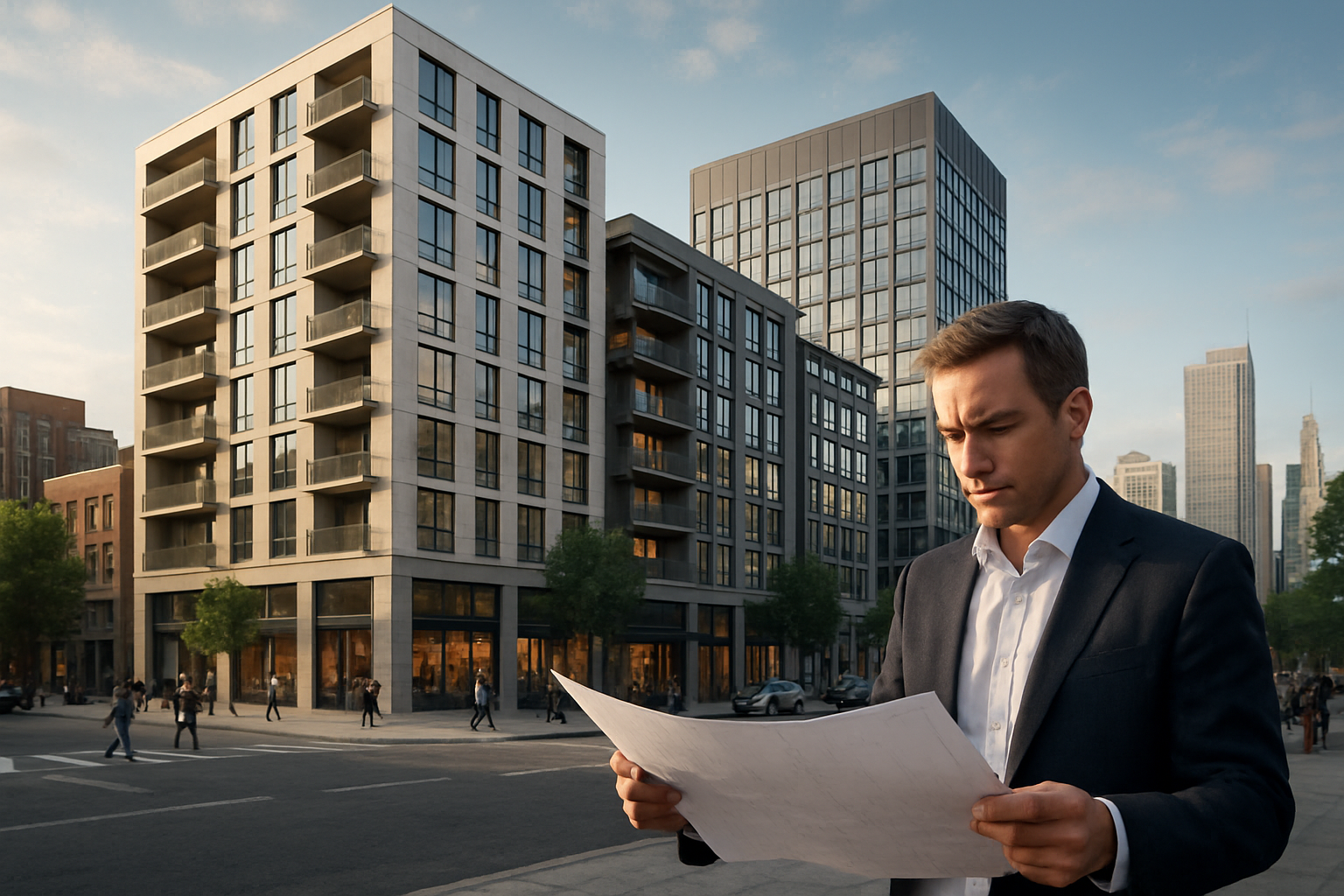Adaptive Reuse: Transforming Commercial Spaces into Residential Gems
Introduction: In a landscape where urban centers grapple with housing shortages and vacant commercial properties, adaptive reuse emerges as a compelling solution. This innovative approach reimagines underutilized office buildings, warehouses, and retail spaces as vibrant residential dwellings. With 25% of office spaces projected to be vacant by 2030, adaptive reuse isn't just a trend—it's a necessary evolution in real estate.

The driving forces behind this trend are multifaceted. Urban populations continue to grow, creating a demand for housing in city centers where new construction is often limited. Simultaneously, shifts in work patterns, accelerated by the COVID-19 pandemic, have left many commercial buildings underutilized. Adaptive reuse addresses both issues, providing much-needed housing while breathing new life into dormant properties.
Economic Benefits of Commercial-to-Residential Conversions
From a financial perspective, adaptive reuse can be highly attractive to developers and investors. While initial costs can be substantial, these projects often prove more economical than new construction. Existing structures already have foundational elements in place, potentially reducing overall expenses and construction timelines.
Moreover, many cities offer incentives for adaptive reuse projects, recognizing their potential to revitalize urban areas. These can include tax breaks, zoning variances, or expedited permitting processes. For investors, such projects can yield higher returns compared to traditional developments, especially in prime locations where new construction opportunities are scarce.
Environmental Advantages and Sustainability
The environmental benefits of adaptive reuse are significant and align with growing concerns about sustainability in real estate. Repurposing existing buildings dramatically reduces the carbon footprint associated with new construction. It minimizes waste, conserves resources, and often preserves historically significant structures that might otherwise face demolition.
Many adaptive reuse projects incorporate green building practices, further enhancing their environmental credentials. This can include energy-efficient systems, water conservation measures, and the use of sustainable materials. As a result, these properties often appeal to environmentally conscious tenants and buyers, potentially commanding premium rents or sales prices.
Challenges in Adaptive Reuse Projects
While the benefits are compelling, adaptive reuse projects come with unique challenges. One of the primary hurdles is navigating complex zoning laws and building codes. Many commercial buildings weren’t designed with residential use in mind, necessitating significant modifications to meet current residential standards for safety, accessibility, and livability.
Structural issues can also pose challenges. Older buildings may require extensive renovations to address outdated systems, potential hazardous materials like asbestos, or structural deficiencies. These unforeseen complications can lead to cost overruns and project delays.
Another consideration is the potential for community pushback. While many neighborhoods welcome the revitalization that adaptive reuse can bring, others may resist changes to familiar landmarks or worry about increased density. Successful projects often require careful community engagement and planning.
Case Studies: Successful Adaptive Reuse Projects
Examining successful adaptive reuse projects provides valuable insights into the potential of this approach. In Detroit, the Book Tower, a 1926 skyscraper, is undergoing a $313 million renovation to create 229 residential units, a hotel, and retail spaces. This project not only preserves a historic landmark but also contributes to the city’s ongoing revitalization efforts.
In London, the Battersea Power Station, an iconic industrial structure, has been transformed into a mixed-use development featuring luxury apartments, offices, and retail spaces. This £9 billion project has become a catalyst for regeneration in the surrounding area.
These examples demonstrate how adaptive reuse can create unique living spaces with character and history, often in prime locations where new construction would be impossible or prohibitively expensive.
The Future of Adaptive Reuse in Real Estate
As urban areas continue to evolve and the demand for housing in city centers persists, adaptive reuse is poised to play an increasingly significant role in the real estate landscape. The COVID-19 pandemic has accelerated this trend, with remote work reducing the need for traditional office spaces and increasing the demand for flexible living arrangements.
Looking ahead, we can expect to see more innovative approaches to adaptive reuse. This might include the conversion of parking structures as autonomous vehicles reduce the need for urban parking, or the transformation of big-box retail stores into mixed-use communities. The key to success will be creativity, flexibility, and a willingness to reimagine the potential of existing spaces.
In conclusion, adaptive reuse represents a forward-thinking approach to real estate development that addresses multiple challenges simultaneously. By repurposing underutilized commercial spaces into residential properties, developers can meet housing demands, revitalize urban areas, and contribute to more sustainable cities. While challenges exist, the potential benefits—both economic and environmental—make adaptive reuse an increasingly attractive option for investors, developers, and urban planners alike. As we move forward, this innovative strategy is likely to shape the future of our cities, creating vibrant, sustainable communities in unexpected places.





